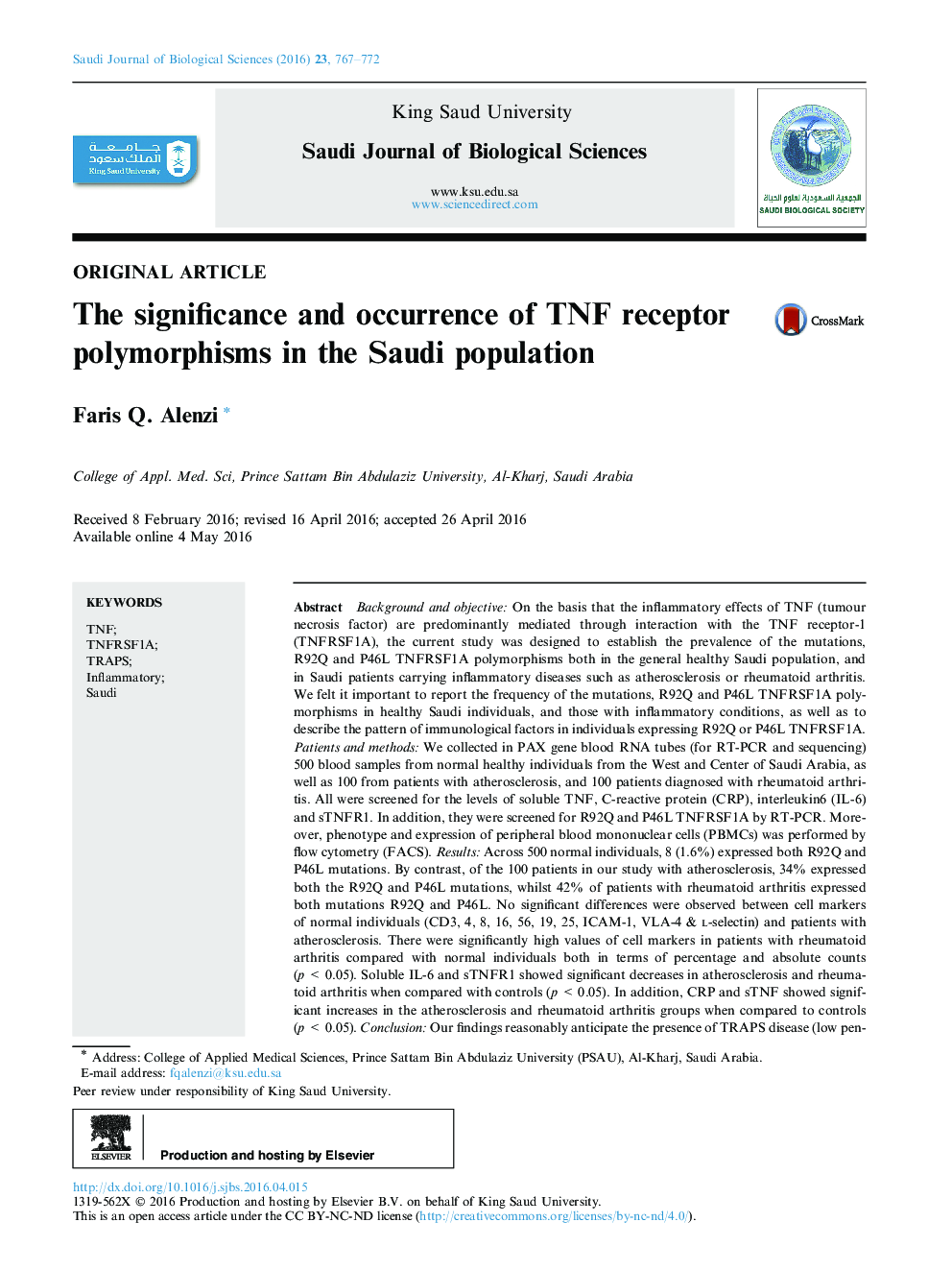| کد مقاله | کد نشریه | سال انتشار | مقاله انگلیسی | نسخه تمام متن |
|---|---|---|---|---|
| 5745455 | 1618669 | 2016 | 6 صفحه PDF | دانلود رایگان |

Background and objective: On the basis that the inflammatory effects of TNF (tumour necrosis factor) are predominantly mediated through interaction with the TNF receptor-1 (TNFRSF1A), the current study was designed to establish the prevalence of the mutations, R92Q and P46L TNFRSF1A polymorphisms both in the general healthy Saudi population, and in Saudi patients carrying inflammatory diseases such as atherosclerosis or rheumatoid arthritis. We felt it important to report the frequency of the mutations, R92Q and P46L TNFRSF1A polymorphisms in healthy Saudi individuals, and those with inflammatory conditions, as well as to describe the pattern of immunological factors in individuals expressing R92Q or P46L TNFRSF1A. Patients and methods: We collected in PAX gene blood RNA tubes (for RT-PCR and sequencing) 500 blood samples from normal healthy individuals from the West and Center of Saudi Arabia, as well as 100 from patients with atherosclerosis, and 100 patients diagnosed with rheumatoid arthritis. All were screened for the levels of soluble TNF, C-reactive protein (CRP), interleukin6 (IL-6) and sTNFR1. In addition, they were screened for R92Q and P46L TNFRSF1A by RT-PCR. Moreover, phenotype and expression of peripheral blood mononuclear cells (PBMCs) was performed by flow cytometry (FACS). Results: Across 500 normal individuals, 8 (1.6%) expressed both R92Q and P46L mutations. By contrast, of the 100 patients in our study with atherosclerosis, 34% expressed both the R92Q and P46L mutations, whilst 42% of patients with rheumatoid arthritis expressed both mutations R92Q and P46L. No significant differences were observed between cell markers of normal individuals (CD3, 4, 8, 16, 56, 19, 25, ICAM-1, VLA-4 & l-selectin) and patients with atherosclerosis. There were significantly high values of cell markers in patients with rheumatoid arthritis compared with normal individuals both in terms of percentage and absolute counts (p < 0.05). Soluble IL-6 and sTNFR1 showed significant decreases in atherosclerosis and rheumatoid arthritis when compared with controls (p < 0.05). In addition, CRP and sTNF showed significant increases in the atherosclerosis and rheumatoid arthritis groups when compared to controls (p < 0.05). Conclusion: Our findings reasonably anticipate the presence of TRAPS disease (low penetrance mutations) amongst the Saudi population although further studies are needed to confirm these results.
Journal: Saudi Journal of Biological Sciences - Volume 23, Issue 6, November 2016, Pages 767-772